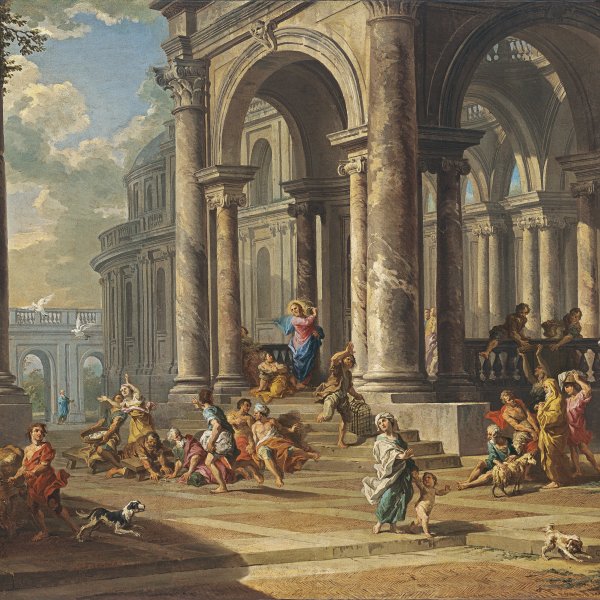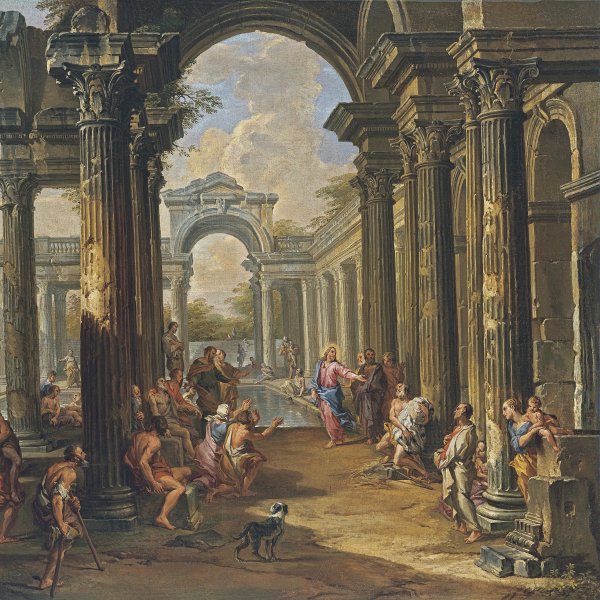Gian Paolo Panini
Piacenza, 169-Rome, 1765
Giovanni Paolo Panini received his initial training in his native city of Piacenzo as a trompe l’oeil, architectural painter and theatrical set painter with Giuseppe Natali, Andrea Galluzzi and Francesco Galli-Bibiena. In 1771 he moved to Rome to learn figure drawing with the painter Benedetto Luti. A notebook of drawings by the artist in the Biblioteca in Piacenza probably dates from this period. Panini also studied with Andrea Locatelli, a landscape and decorative fresco painter. His first documented commission was for the fresco decoration of the rooms in the Villa Patrizi in Rome (now lost), executed between 1719 and 1725. During these years Panini acquired a precocious reputation among Roman artistic circles and in 1718 became a member of the Congregazione dei Virtuosi al Pantheon, while the following year he joined the Accademia di San Luca, presenting as his entry work Alexander visiting the Tomb of Achilles (Accademia di San Luca, Rome), his first documented easel painting. Over the course of the following years Panini worked on important decorative cycles in fresco, many of which have not survived. Among those still in existence and particularly notable for its quality and complexity is the one commissioned by Duke Odescalchi at the Villa Montalvo Grazioli in Frascati.
As an easel painter, Panini primarily focused on real and imaginary views of Rome with classical ruins or modern monuments and buildings. His vedute frequently depict ceremonies, festival and other events in the city and are an important source of information on the life and customs of the day. Panini also executed portraits, history paintings and so-called “gallery paintings”, including Gallery of Views of ancient Rome and Gallery of Views of modern Rome (both Musée du Louvre, Paris).
As an easel painter, Panini primarily focused on real and imaginary views of Rome with classical ruins or modern monuments and buildings. His vedute frequently depict ceremonies, festival and other events in the city and are an important source of information on the life and customs of the day. Panini also executed portraits, history paintings and so-called “gallery paintings”, including Gallery of Views of ancient Rome and Gallery of Views of modern Rome (both Musée du Louvre, Paris).






